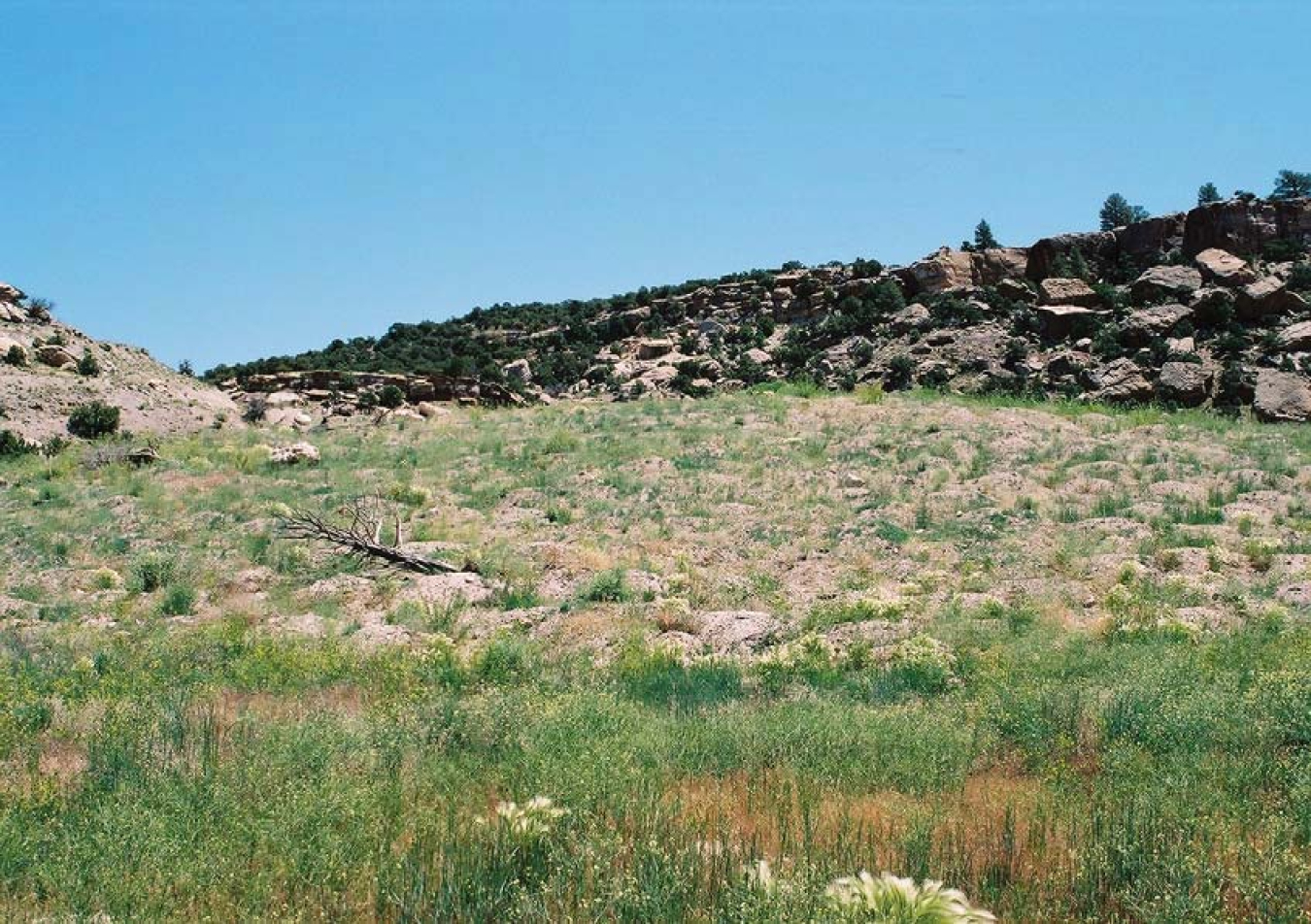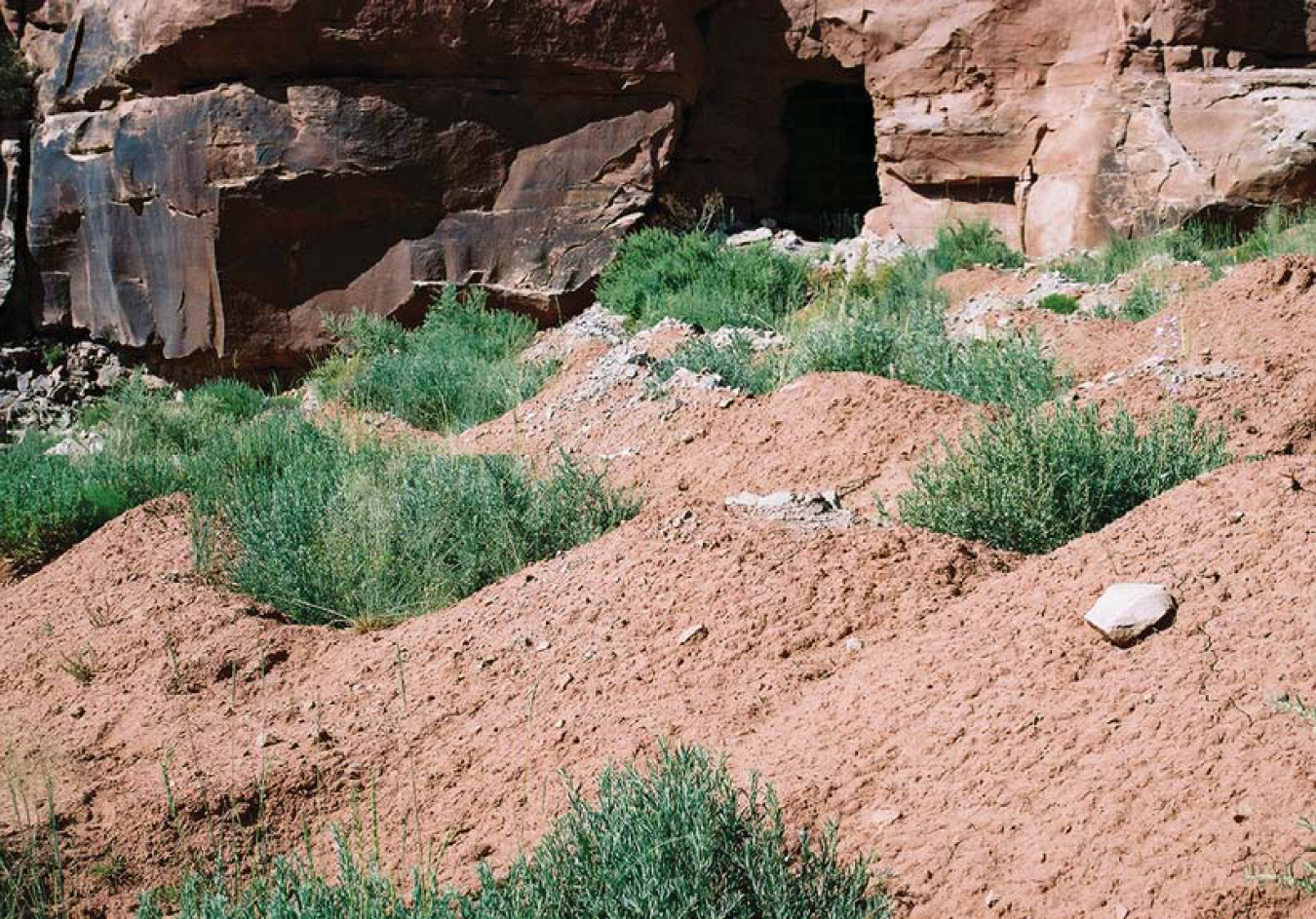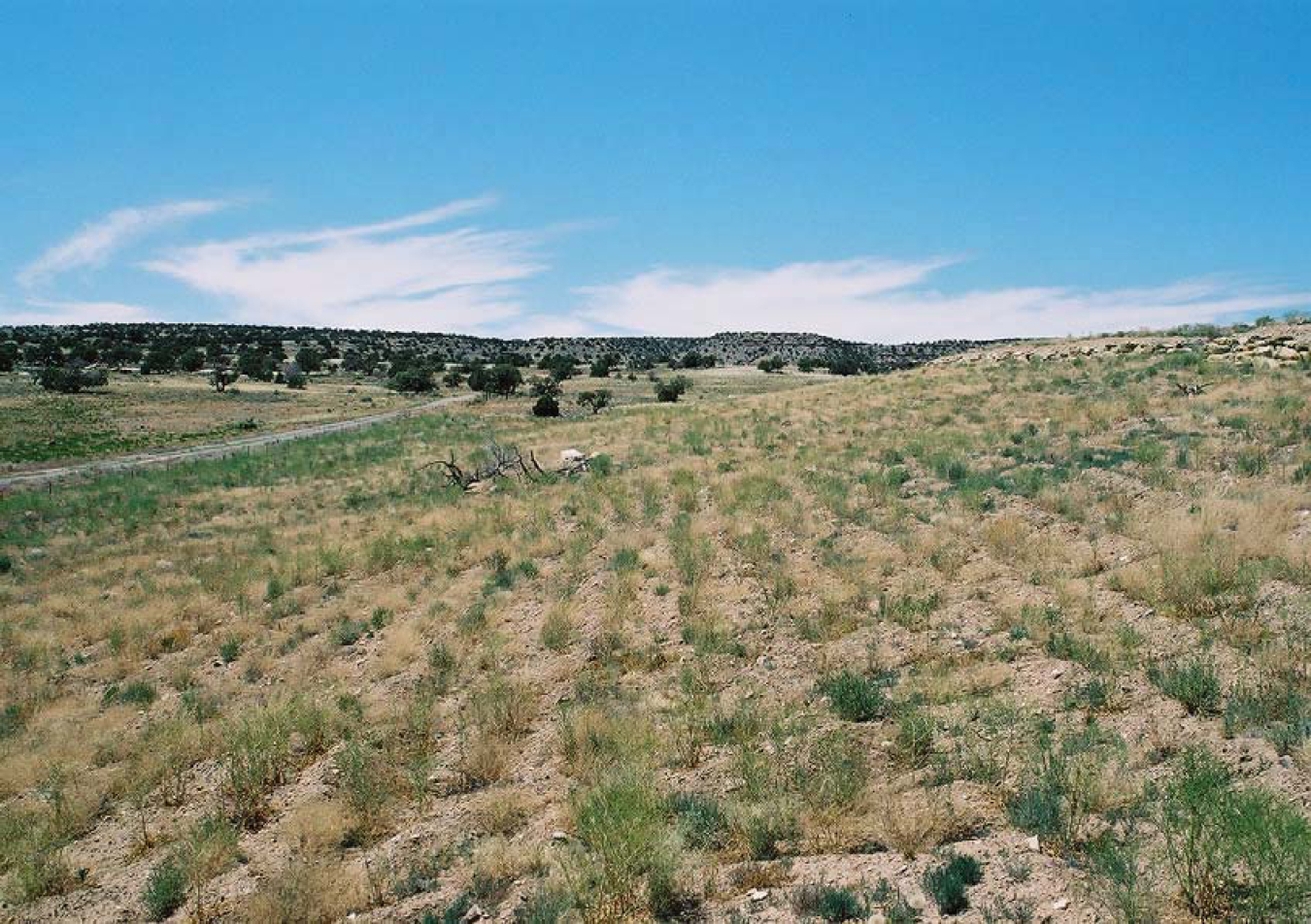Case Study: Mined Land Reclamation on DOE’s Uranium Lease Tracts, Southwestern Colorado
September 2, 2010Introduction

View of pocked waste rock pile, two years after reclamation.
Typical activities associated with mined land reclamation include regrading waste rock piles; closing open portals, shafts, and vents; and revegetating disturbed areas. Successful reclamation, which is the process of creating stable landforms and establishing desirable vegetative communities, has been mostly successful, especially considering the harsh environment in which the U.S. Department of Energy (DOE) uranium lease tracts are located.
Uranium Leasing Program personnel have learned that successful reclamation usually takes at least three years to achieve. Particularly, arid sites may take five years for desired vegetation to become well established thus allowing a mine to be considered successfully reclaimed. In reclamation, patience is a critical virtue.
Background

Close-up view of pocked waste rock pile, two years after reclamation.
DOE Uranium Leasing Program (ULP) manages 31 uranium lease tracts in southwestern Colorado. Since 1995, reclamation specialists have monitored the success of reclamation practices that have been conducted on the lease tracts.
The ULP has successfully reclaimed former uranium mines by implementing reclamation techniques which promote long-term geomorphic stability. They are conducive to successful establishment of desirable vegetative communities.
What We Learned
We developed a method for regrading waste rock piles that has resulted in a more natural looking landscape.
- Dig out the area around mine piles with a track hoe or bulldozer, creating a trench or basin at the toe of the pile.
- Surface soil materials salvaged from the trench area is usually enough to cover the regraded mine pile surface.
- Bulldoze the waste rock into the trench until the pile slopes are flattened, usually to a slope angle of 4H:1V to 5H:1V.
- The graded waste rock pile blends with the surrounding landscape, while the shallower slopes result in less erosion potential and increased stability and function.
A rough finished surface (versus a smooth surface that typically is desired in landscaping) increases reclamation success.
- The microtopography created by a roughened surface enhances seed germination by trapping seeds, sediment, precipitation, organic materials and runoff.
- The roughened surface also decreases the potential for soil movement off-site. Sediment eroded by runoff travel only short distances before being deposited in either depressions (pocks) or basin areas on the surface of the regraded area.
- We made roughened surfaces by pocking the surface with a track hoe bucket or ripping with bulldozer ripper blades.
Assess the regraded landscape for drainage.
- Rerouting off-site drainage away from the reclaimed area has been a successful method for avoiding soil erosion and maintaining the integrity of the pocks or roughened surface on the regraded area.
- Construction of an appropriately sized and armored stream channel through the reclaimed area is an alternative when runoff cannot be rerouted around the perimeter of the reclaimed area
Surface soil materials on regraded areas has a beneficial effect on the success of revegetation efforts.
- Be imaginative and creative to find local sources; stock pond sediments are a great source of material provided the pond is not host to noxious or other undesirable weed species. Only a few inches of surface soil materials can dramatically increase revegetation success.
- Seed broadcast over the regraded and soiled mine site is trapped in pocks, dozer ripper tracks and basin areas, used to create the rough surface of the regraded area.
We’ve learned that successful establishment of desirable vegetation usually takes at least three years to achieve. Annual weeds typically dominate a site during the first growing season; annual weeds and seeded species typically share the total plant cover during the second growing season; and seeded species normally dominate the site during the third growing season. We continue ongoing weed control efforts, primarily by spraying herbicides that have been very effective in reducing, and often eradicating, populations of noxious weeds, until reclamation has been declared complete.
LM will continue to review the lessons learned, observations, and best practices identified while conducting long-term stewardship and implement them in future projects.
For more information on the Uranium Leasing Program, please visit our website.

View of a ripped side slope, four years after reclamation.

